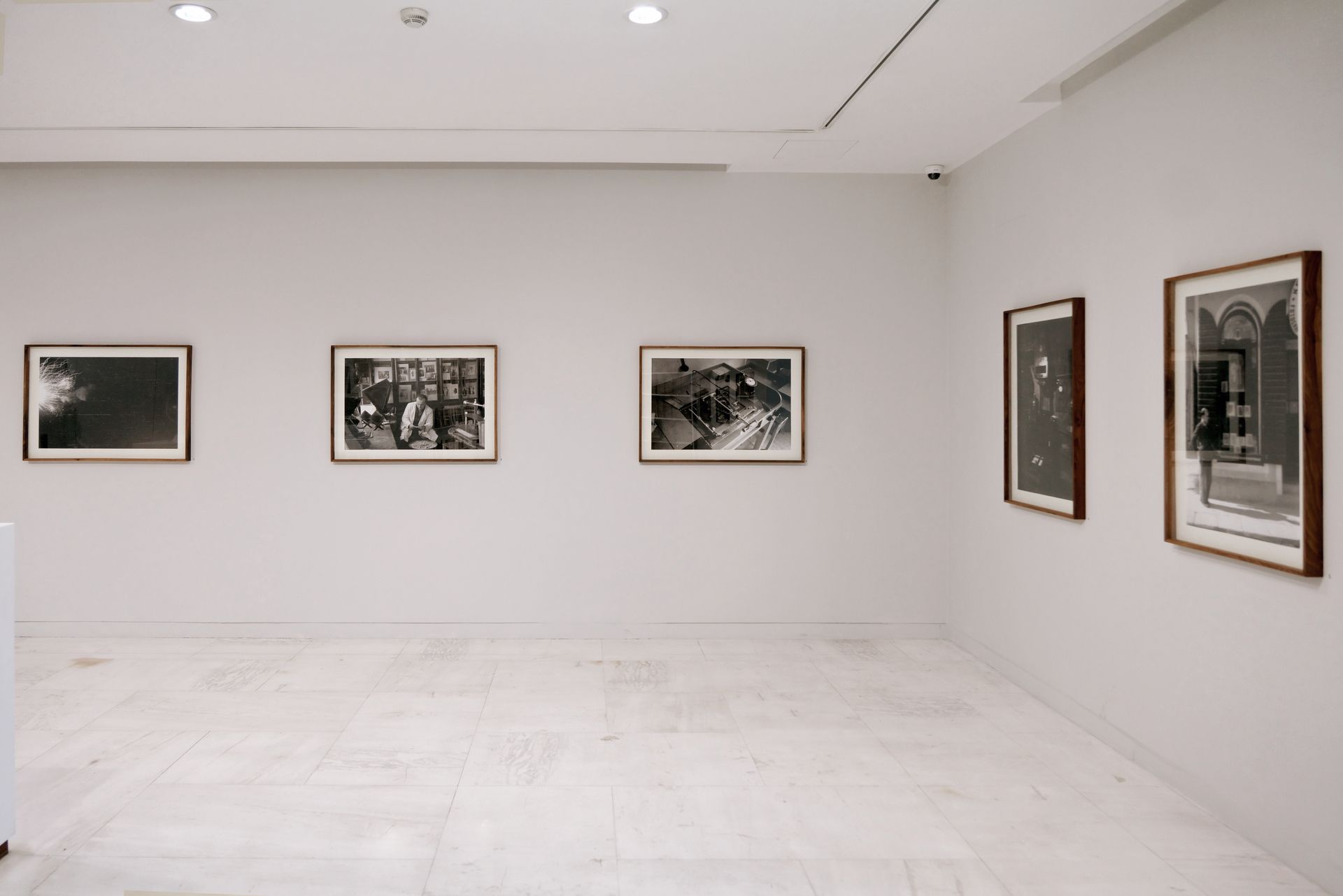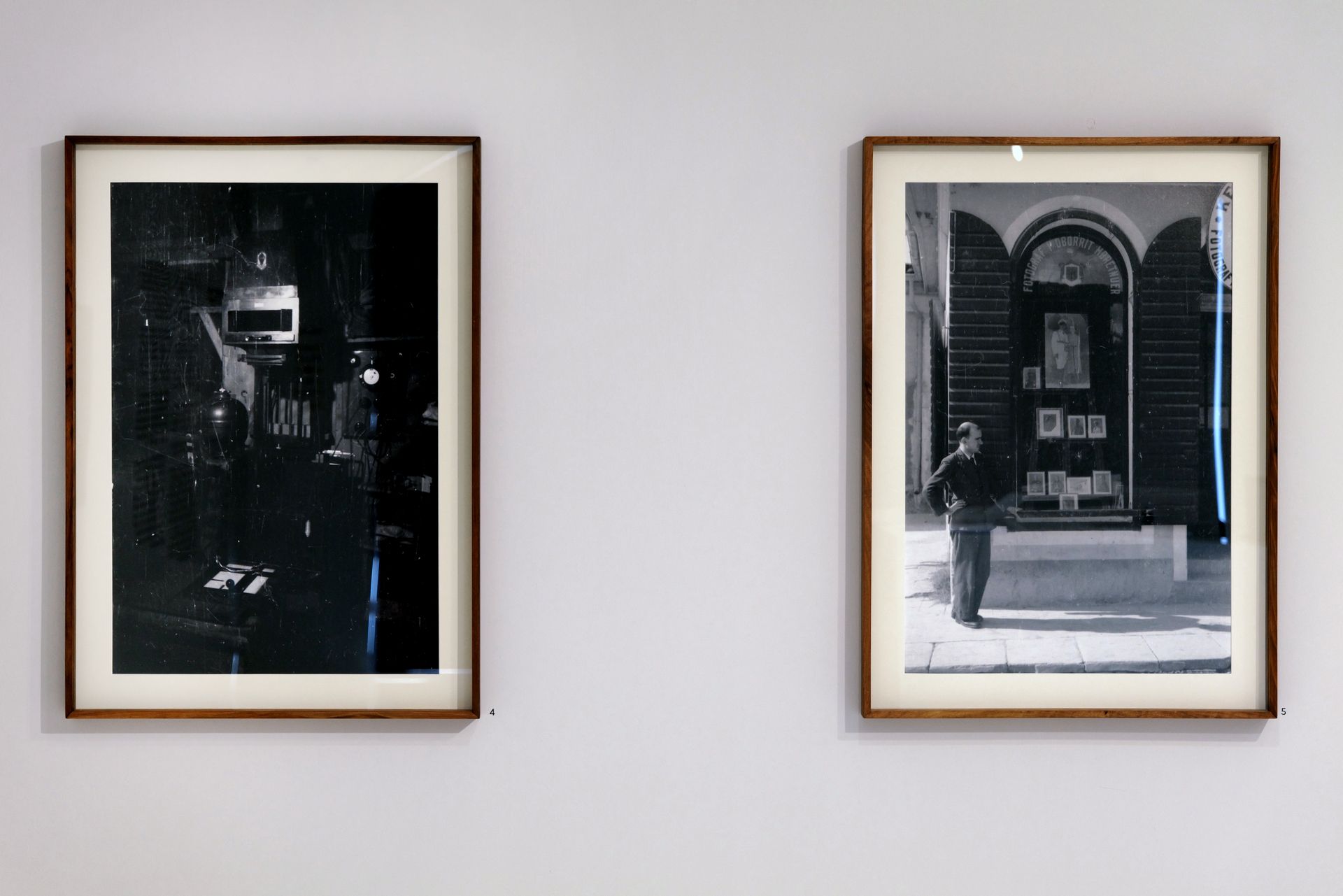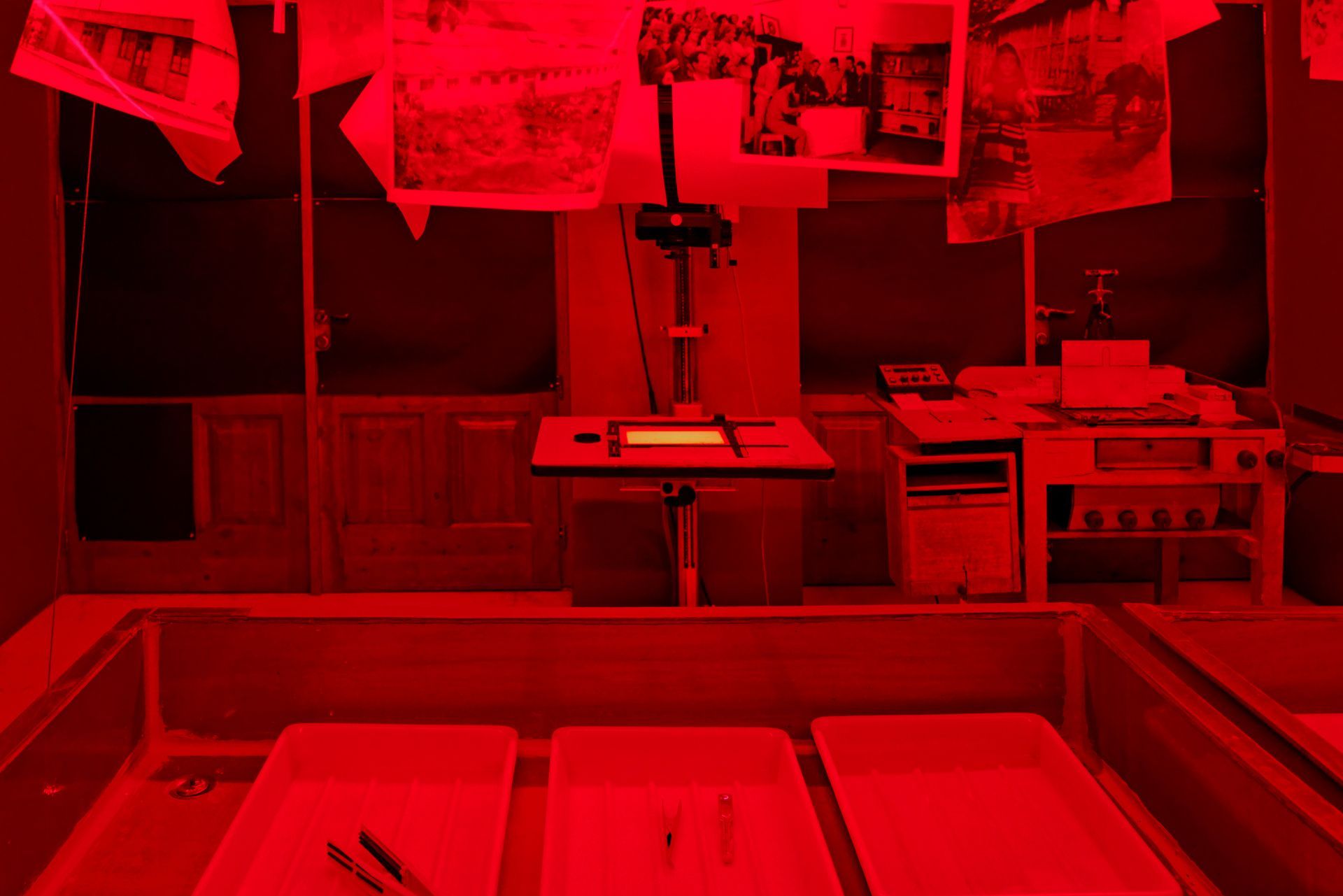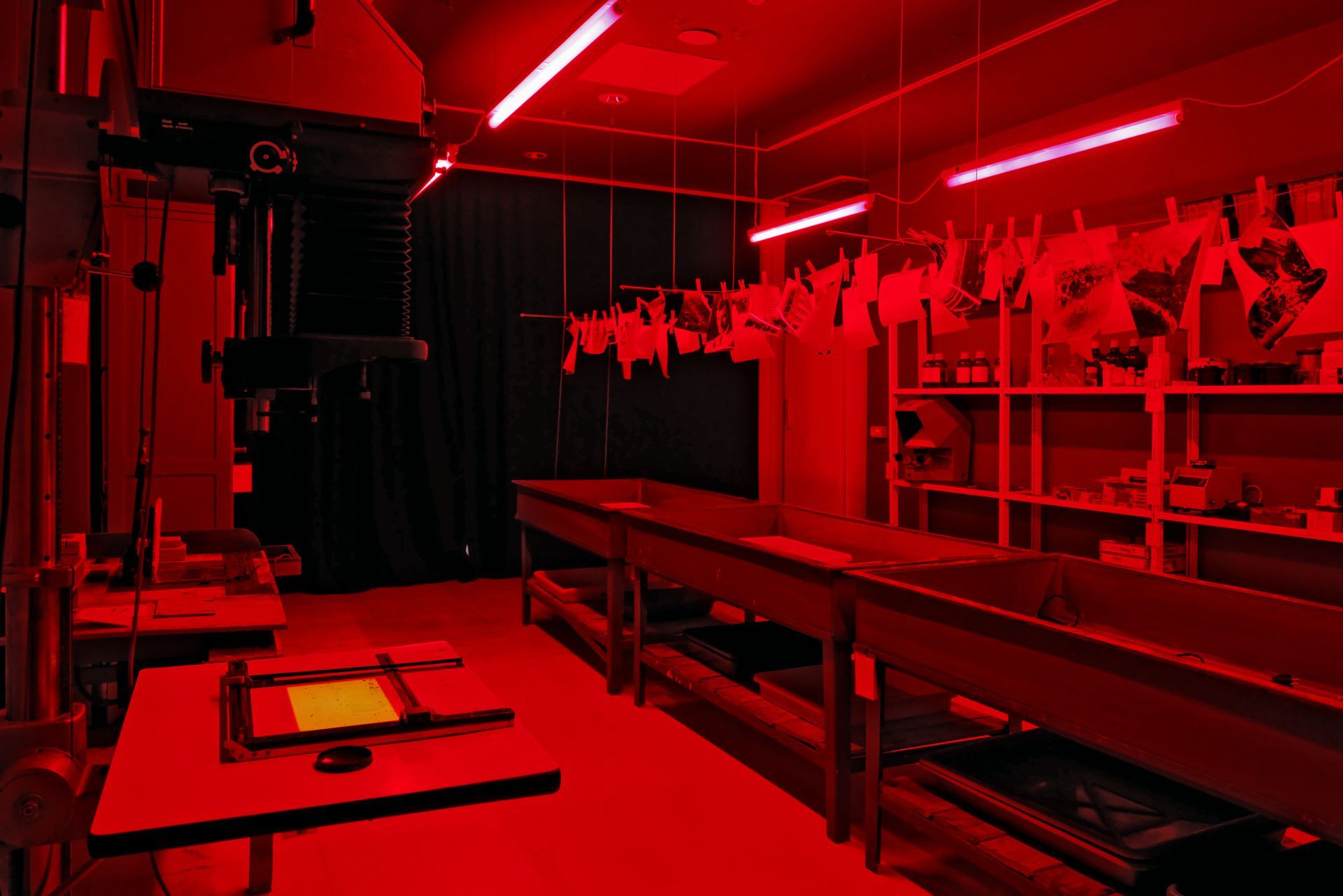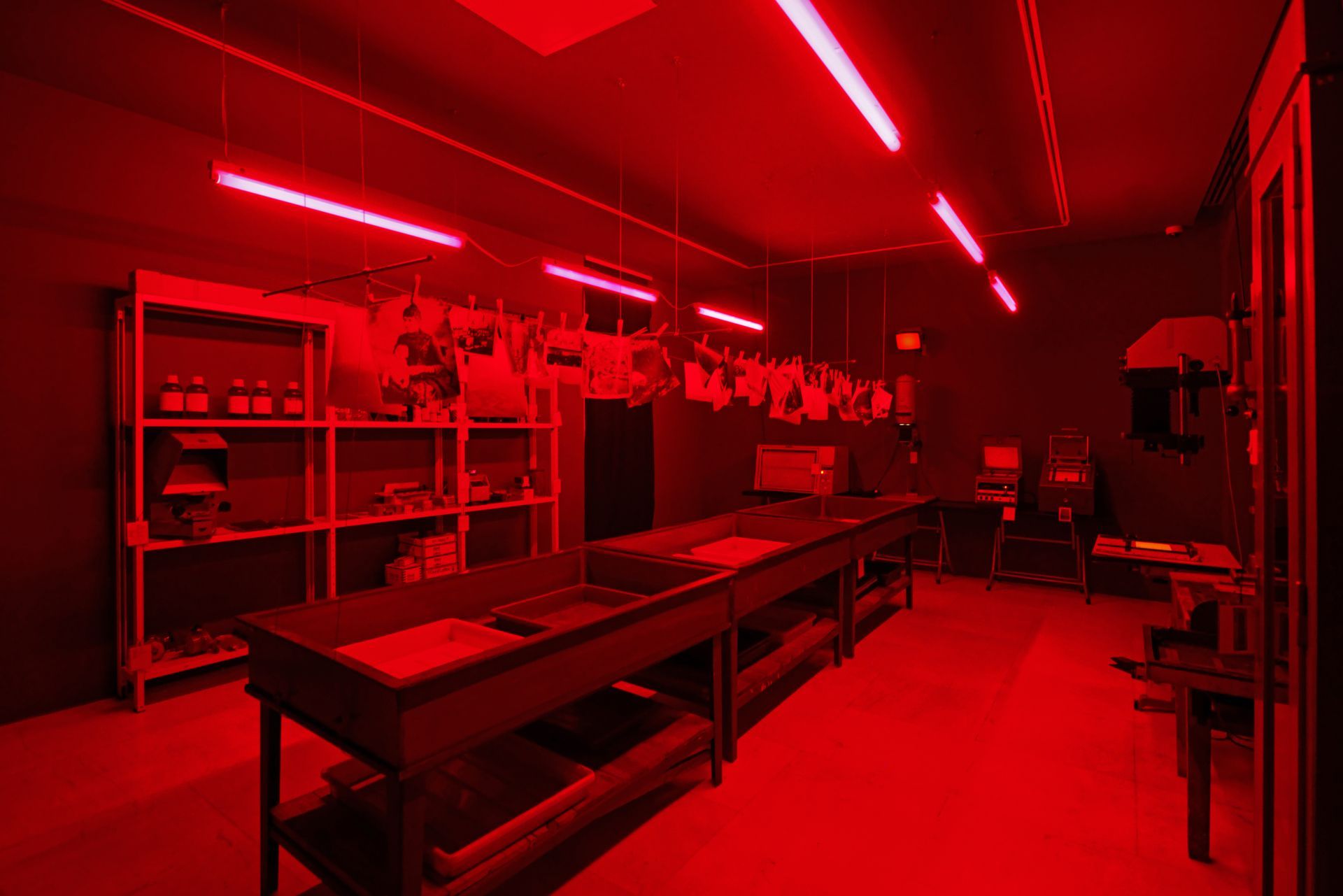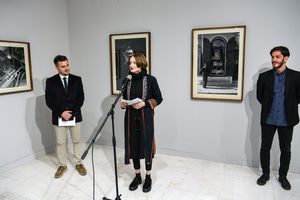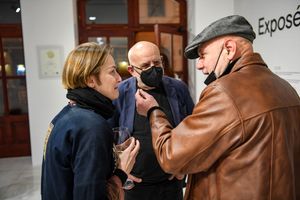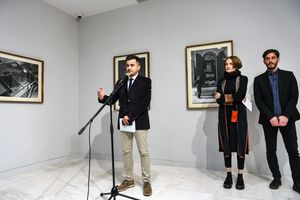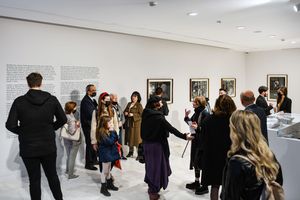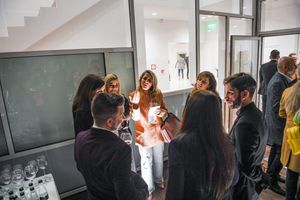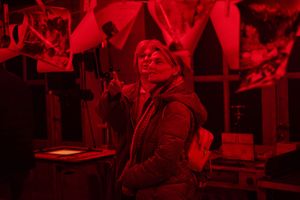Exposé
–
Each day millions of images are shared all across the globe. However, the offset between the trigger and the release of the images is shorter than the time the enlarger is lit in a photo lab thus the dark room remains an archaic and mysterious technique which transforms the physical conditions of the object/subject. Once, the dark room was an area reserved for photographers, assistants and lab technicians who would plunge into feelings in a room dominated by red lights, waiting for the “magic“ to occur. All images are generated through specific processes, but few people are interested in such technicalities and most of us ignore them.
Fuzzy images finally become clear, those reversed conform to the logic of “gravity“. Your brain begins to adjust and you become able to “see“ in there, a process which is similar to the physical act of seeing. Photography itself has always been closely connected with technology. In the images we meet the contribution of engineers from various disciplines: optics, electronics, chemics; fine wood, metal and glass workers. People with an appetite for experimentation, visionaries, dreamers... photographers and artists who use specific tools to “breath life“ into an image.
In addition to displaying objects preserved in the museum’s archive, this exhibition cannot describe quasi 200 years of technological developments in the field of photography, but it is worth giving a chance to visitors to engage in a physical and emotional relationship with objects dating back to a period when approach to photography was different. These objects carry their own life, a long voyage through time and space. They were looked after by the Marubi, the most important photographers in Albania.
The earthquake that stuck and damaged the city in 1905 forced Kel Marubi to move his atelier - known as "Dritëshkroja Marubbi" (Marubi photo studio) - to the Great Street. During the 1930s and 1940s this space became an ‚industry’ for photography which would also undertake the supply of photographic material for the region. Once the narrow and arched doorway was opened, the sunlight on the window display caressed the photographs of unknown and famous people. Behind the desk one could see registers, roll films, books, correspondences and other objects. In this "revival atelier“ created in the museum, you will find exhibits of old trunks used by the photographers, never-exhibited images, test prints, commissioned and uncollected photographs by families.
Exhibition Credits
- Curated by
Orestia Kapidani
- Supported by
Ministry of Culture of Albania
Fujifilm Albania - Exhibition coordinators
Luçjan Bedeni
Lek M.Gjeloshi
- Assistants
Marina Lazri
Gjergj Spathari
- Supported by
Ministry of Culture of Albania
Fujifilm Albania







